In the vast and promising landscape of Saudi Arabia, tilapia fish farming offers a golden opportunity for sustainable protein production. From the shimmering Red Sea to the expansive Arabian Gulf, this article delves into the essential elements of a business plan, focusing on one crucial aspect: setting up ponds and tanks for tilapia. In straightforward terms, we’ll guide you through transforming your vision into a thriving tilapia fish farm.
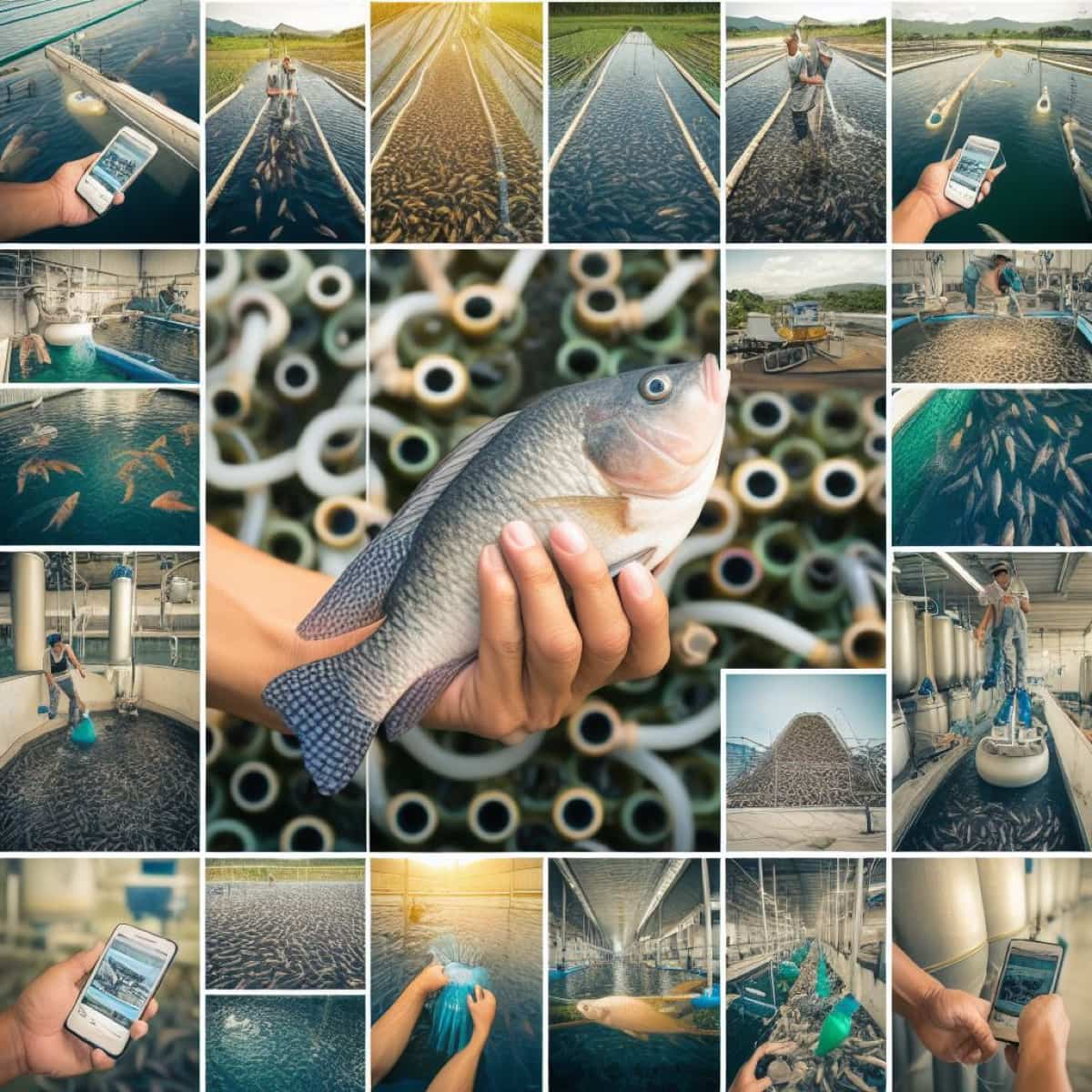
Tilapia Fish Farming in Saudi Arabia
Market Analysis and Demand for Tilapia in Saudi Arabia
Saudi Arabia is witnessing a burgeoning aquaculture sector, primarily focusing on tilapia but also encompassing shrimp, grouper, sea bream, rabbit fish, and mullet. While aquaculture plays a pivotal role in providing fresh fish to the nation, it has yet to keep pace with the escalating demand. However, integrating multitrophic systems involving tilapia and seaweed presents a promising avenue for enhancing economic viability and environmental sustainability.
Exploring the rearing of tilapia in Saudi fish farmers, broadening the scope of their operations. Saudi Arabia, which controls 80% of the Arabian Peninsula, is strategically located between Iran and the Peninsula, with the Red Sea to the west and the Arabian Gulf to the east. This geographical advantage adds to the potential of the aquaculture industry.
Despite being smaller than the country’s wild-capture fisheries, the aquaculture sector has grown substantially, surging from 2,696 metric tons in 1995 to an impressive 22,253 metric tons in 2008. This expansion translates to a U.S. $229 million product value, contributing around 24% to the kingdom’s overall fish production.
Benefits and Challenges of Tilapia Fish Farming in Saudi Arabia
Saudi Arabia’s demand for seafood, particularly fish, is increasing, but aquaculture needs help to keep up with this demand, leading to a per-capita consumption gap of 8 kilograms. This gap is widening due to population growth and sluggish fisheries landings. Fish and shrimp farming is crucial in ensuring a consistent seafood protein supply and self-sufficiency in seafood provision.
In case you missed it: 14 Biofloc Fish Farming Tank Suppliers in India: Top Aqua Products Manufacturers
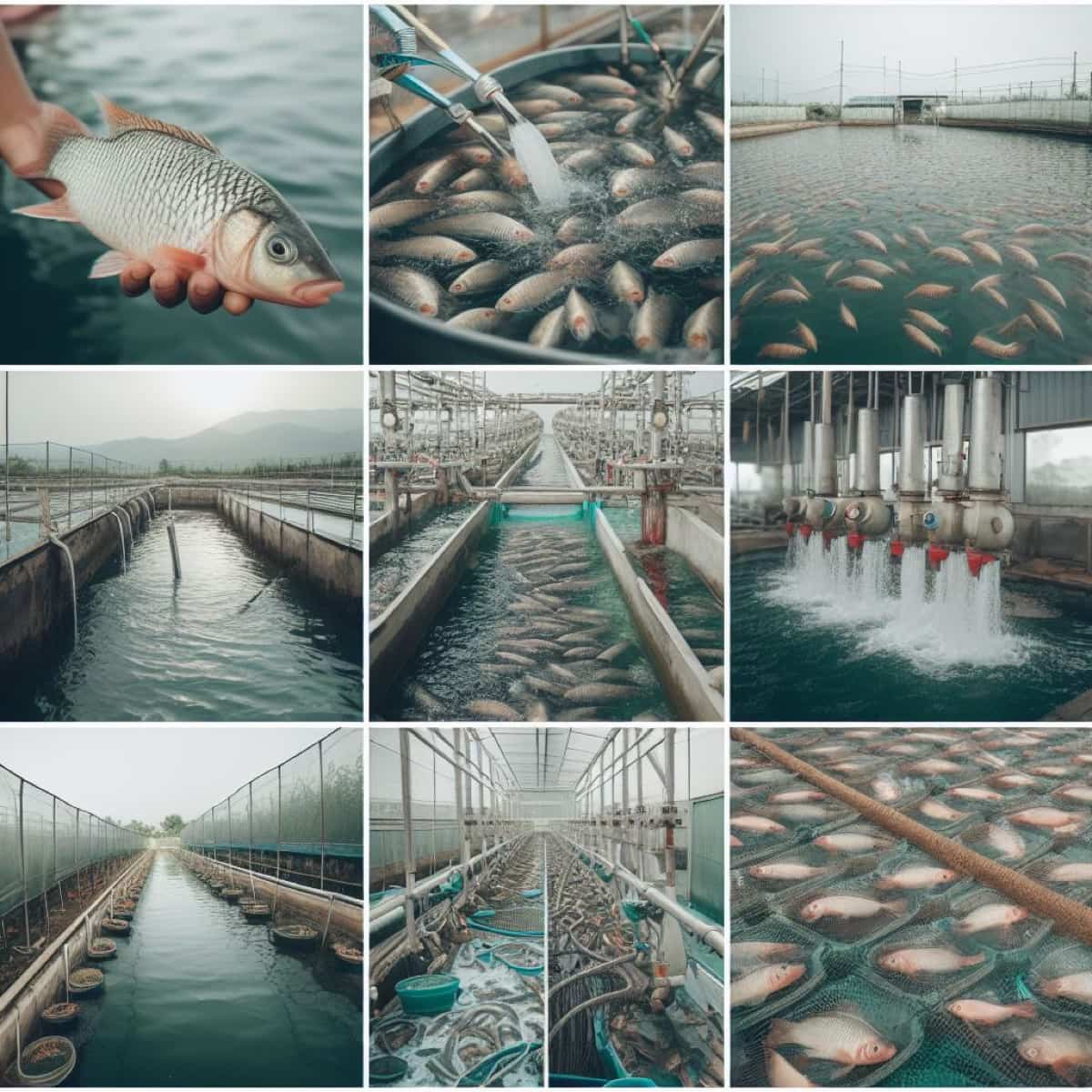
The Nile tilapia production in Saudi Arabia is primarily led by Riyadh, followed by Mecca, Qasim, the Eastern Region, and Tabuk. Most tilapia farms in Saudi Arabia are run by private companies, allowing them to adjust production based on economic viability. A Ministry of Agriculture project in Saudi Arabia explores raising tilapia in full-strength seawater, allowing seaweeds to absorb nutrients from fish effluent, allowing water reuse and a novel approach to tilapia farming.
Tilapia Production in Different Regions of Saudi Arabia
Saudi Arabia over three years, from 2006 to 2008. Riyadh emerged as a significant hub, contributing 1,828 metric tons of tilapia in 2006, and this number steadily rose to 3,443 metric tons by 2008. Mecca, Qassim, and the Eastern Region also made substantial contributions to tilapia production, showcasing the country’s geographic diversity of fish farming.
Developing Tilapia Fish Farming in Saudi Arabia
Saudi Arabia, a significant fish importer, is keenly interested in developing fish farming due to the strain on its capture fishery, which operates beyond sustainable limits. The country has been particularly encouraging tilapia production as a solution. A study in the Central Region of Saudi Arabia analyzed 23 intensive fish farms. It assessed various cost elements, like variable and feed costs, and established cost functions. The minimum average cost occurred at 201 tonnes of tilapia per year per farm, while the maximum profit was achieved at 300 tonnes annually per farm. Interestingly, all farms operated below the profit-maximizing scale; most were under the minimum efficient scale.
Tilapia Fish Farming Business Plan Proposal
A business plan for tilapia fish farming in Saudi Arabia should be well-structured. It should include key sections to provide a comprehensive view of your venture.
Executive Summary
The executive sum up is a concise overview of your Saudi tilapia fish farming business plan. It introduces your business goals, target market, competitive edge, and financial projections. It sets the stage for your plan, giving readers a clear understanding of your vision and objectives. This section delves into market analysis for tilapia fish farming. It involves studying the demand for tilapia in your chosen market, understanding market trends, and analyzing competitors. Thorough analysis can help you spot opportunities and challenges to make informed business decisions.
Site Selection and Land Preparation for Tilapia Fish Farming
Selecting the right location is crucial. Consider factors like water quality, land availability, infrastructure, and market proximity. This section guides you through evaluating different locations to choose the best site for your fish farm. Establishing a tilapia fish farm requires the right infrastructure, including fish ponds or tanks, aeration systems, water supply, and waste management.
In case you missed it: Sustainable Biofloc Fish Farming: A Comprehensive Guide to Eco-Friendly Practices
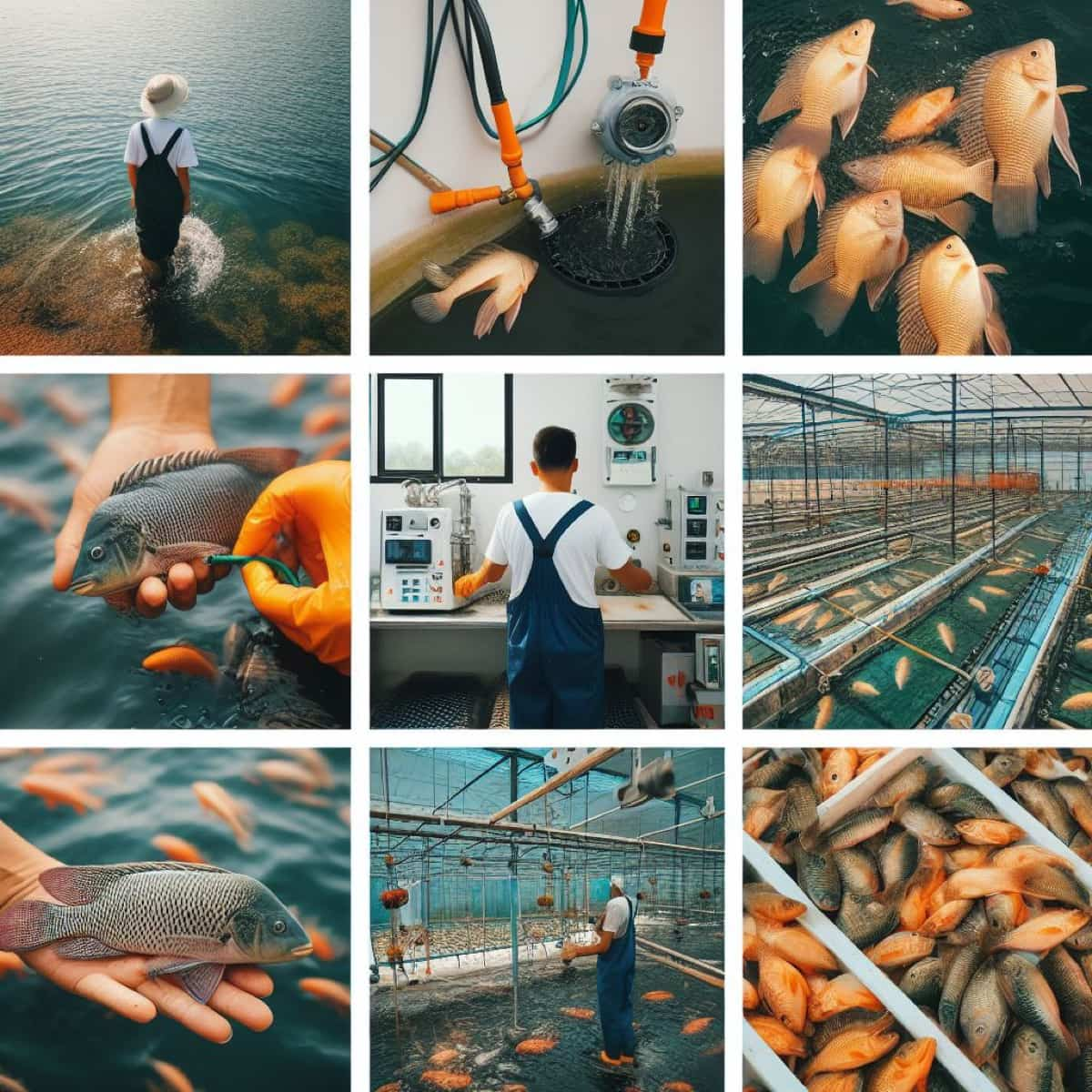
This section provides detailed information on requirements and how to set them up effectively. Various tilapia species are available for farming, each with unique traits. This section discusses popular species, growth rates, adaptability, and market demand. Understanding these traits helps you make an informed choice for your farm.
Feeding and Nutrition Requirements for Tilapia Fish Farming
Proper feeding and nutrition are crucial for tilapia growth. Learn about nutritional requirements, feeding strategies, and sourcing quality feed. Explore cost-effective feeding methods and techniques to maximize growth and minimize wastage. Maintaining optimal water quality is vital. This section covers water quality parameters, testing, and monitoring techniques. It also discusses water filtration, aeration, and strategies to maintain suitable tilapia growth and survival conditions.
Disease Prevention and Management in Tilapia Fish Farming
Disease outbreaks can harm a tilapia farm. Effective disease management is crucial. Learn about common diseases, prevention, and treatment options to keep your fish healthy. Develop a marketing and sales strategy. Identify your target customers, create a brand identity, and execute marketing campaigns.
Explore sales channels and distribution networks to reach your customers efficiently. Estimate initial investment, operational costs, revenue projections, and profitability. A comprehensive financial plan helps determine the viability of your tilapia fish farming venture and attracts potential investors.
Risks and Challenges
Every business faces risks and challenges. Understand potential risks in tilapia fish farming and strategies to mitigate them. Preparation can help you navigate challenges effectively and increase your chances of success.
Cost to Start Tilapia Fish Farming in Saudi Arabia
Starting a tilapia fish farm in Saudi Arabia involves several cost components. These include expenses for land acquisition, pond or tank construction, water supply systems, aeration systems, hatchery equipment, and fish feed. Initial investments can vary widely based on the scale of the operation, location, and the level of technology used.
Profits in Tilapia Fish Farming in Saudi Arabia
The potential for profits in tilapia fish farming is substantial. Saudi Arabia’s growing demand for fish, including tilapia, creates a strong market. To maximize profits, efficient management, proper disease control, and sound marketing strategies are essential. By producing high-quality tilapia and considering value-added products, farmers can enhance profitability. Additionally, integrating innovative techniques, like seaweed farming, offers opportunities for diversification and sustainability, potentially increasing long-term gains.
Tips on the Setup of Tilapia Fish Farming in Saudi Arabia
- Land Requirement: Starting a tilapia farm typically requires one to two acres. The scale of your operation and the chosen farming system influence land requirements.
- Disease Management: Tilapia can be susceptible to Streptococcosis, Columnaris, and Aeromoniasis. Implementing proper biosecurity measures, regular health monitoring, and treatment can help in prevention and manage these diseases effectively.
- Time to Market Size: On average, tilapia takes around six to eight months to reach a market size of approximately 250-300 grams. This timeline includes species, feeding practices, water temperature, and growth conditions.
- Financial Support: Explore potential grants or subsidies for tilapia fish farming. Availability varies by location and government policies. Research local agricultural or fisheries authorities to identify funding opportunities.
- Local Production: Focusing on local production offers several advantages. It ensures freshness, reduces the carbon footprint, and supports local agriculture—a win-win for producers and consumers.
- Expertise and Commitment: Success in tilapia farming requires genetics, nutrition, and disease management expertise. Additionally, a commitment to environmental stewardship and community development is vital.
- Business Activities: Key activities include breeding, hatchery operations, fish farming, feeding, water management, disease control, and marketing and sales.
- Key Resources: Ensure access to critical resources like tilapia hatchery and fish tanks, water filtration systems, nutritional feed sources, and expertise in genetics, nutrition, and disease management.
- Revenue Streams: Generate income by selling fresh tilapia to restaurants, supermarkets, and seafood distributors. Explore value-added products, like fillets and smoked fish, and consider revenue from tourism and educational activities.
- Distribution Channels: Choose channels such as direct sales to key customers, online platforms, local food delivery services, and participation in food events and farmers’ markets.
- Customer Relationships: Building personalized customer relationships and engaging through social media and educational content helps maintain loyalty and trust.
- Cost Structure: Be aware of costs related to infrastructure, operations, marketing, research and development, insurance, and legal compliance.
- Key Partnerships: Collaborate with aquaculture experts, suppliers of quality feed and equipment, key customers, and local community organizations and government agencies for support.
- Key Metrics: Track key metrics like revenue growth, customer satisfaction, market share, production efficiency, and return on investment.
In case you missed it: Government Subsidy for Biofloc Fish Farming in India
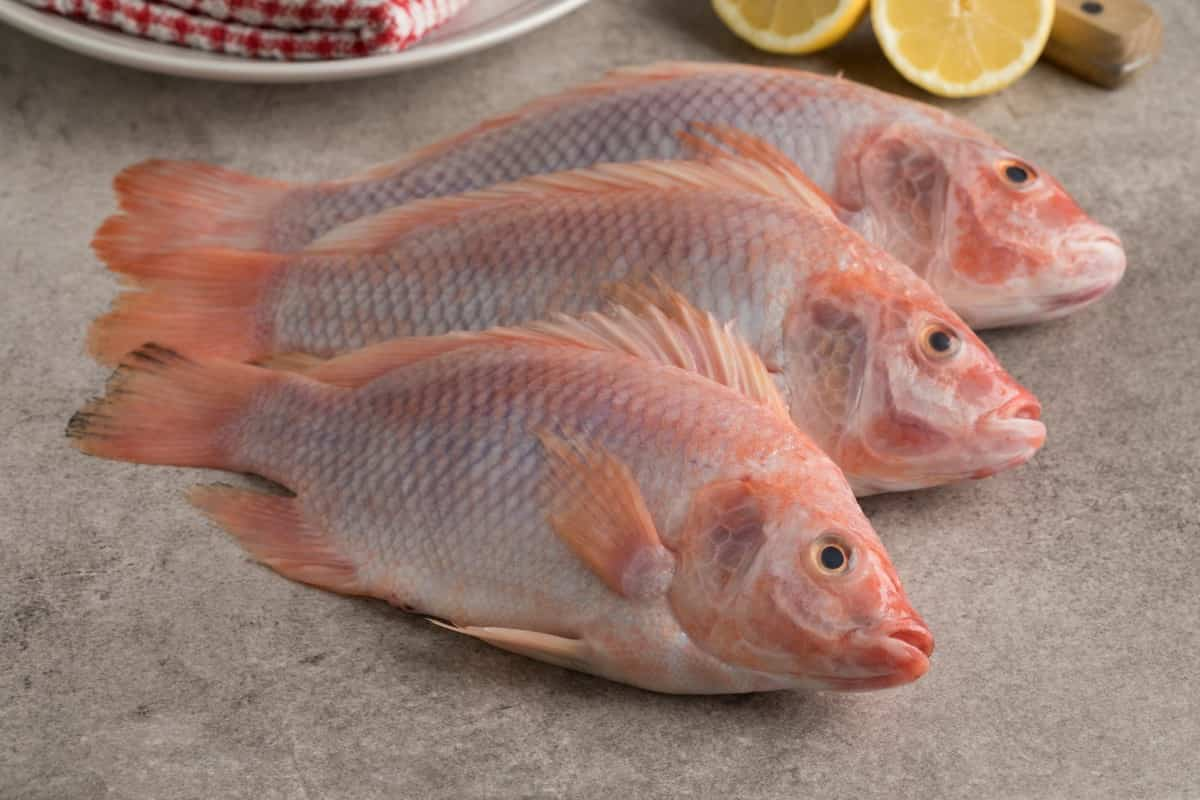
How to Setup Ponds and Tanks for Tilapia Fish Farming in Saudi Arabia
- Assess Your Location: Choose a suitable location with access to freshwater sources, such as wells or rivers. Ensure the land is flat and well-drained.
- Build or Prepare Ponds: Decide on the pond size and shape, typically rectangular or circular. Construct or excavate the pond, ensuring proper lining to prevent leakage. Provide adequate fencing to keep out unwanted predators.
- Water Management: Maintain the right water quality with optimal pH (around 6.5 to 9.0) and temperature (25-30°C). Regularly test water for ammonia, nitrite, and nitrate levels. Consider aeration systems to ensure oxygen levels are sufficient.
- Stocking and Feeding: Source healthy tilapia fingerlings from reputable hatcheries. Feed the fish a balanced diet, including commercial pellets and natural food from the pond.
- Disease Control: Implement a strict biosecurity program to prevent diseases. Be prepared to handle common tilapia diseases and have treatments available.
- Harvesting: Monitor the growth of tilapia, and when they reach market size (around 250-300 grams), plan for harvesting. Use proper equipment for harvest to minimize stress and damage.
- Marketing and Sales: Identify potential markets for your tilapia, such as local restaurants, supermarkets, and seafood distributors. Develop best marketing strategy to reach your target customers efficiently.
- Regulations and Compliance: Familiarize yourself with local and national regulations regarding tilapia farming and ensure you comply with them.
Sustainable Aquaculture in Saudi Arabia: Tilapia and Seaweed
An innovative approach is being embraced at the Ministry of Agriculture’s Fish Farming Center near Jeddah. They’re raising Oreochromis spiluris, a type of tilapia, in full-strength seawater with a salinity of 42ppt from a well near the seashore. What makes this special is that it’s part of an integrated multitrophic aquaculture system.
In this system, the fish effluent, essentially wastes, fertilizes Ulva and Gracilaria seaweed. These seaweeds, in turn, act like nature’s sponges, absorbing things like nitrogen, phosphorus, carbon dioxide, and micronutrients from the water. This clever recycling allows the water to be reused for aquaculture or safely discharged into the environment without causing harm.
Unlocking the Potential of Tilapia Farming in Saudi Arabia
Tilapia farming in Saudi Arabia is at the threshold of a remarkable transformation. Sustainable cultivation in highly saline waters offers newfound potential for local fish farmers, leveraging the nation’s extensive seacoasts and moderate temperatures. Integrating polyculture with shrimp farms along the Red Sea coast presents further opportunities.
In case you missed it: Growing Vegetables and Fish Together in the Backyard: Starting a Backyard Aquaponics
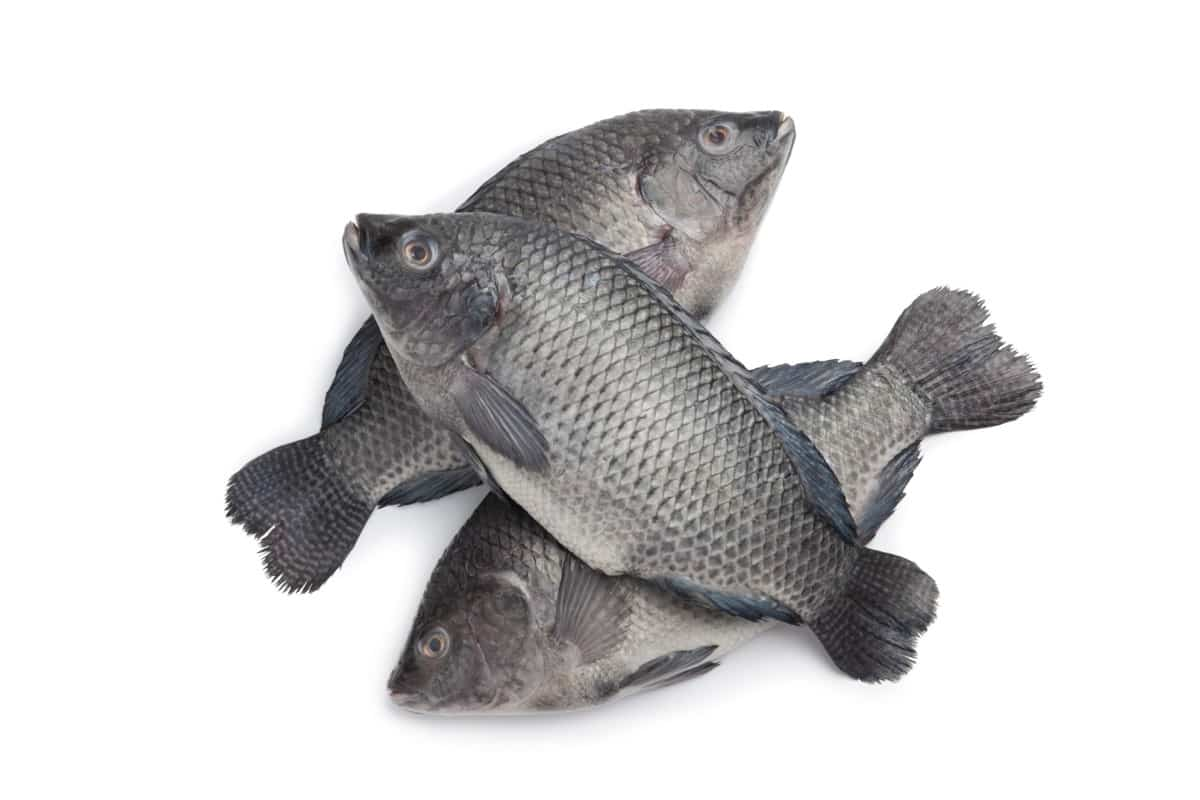
This evolution in tilapia production is about meeting Saudi consumers’ demands and catering to the preferences of immigrant contract workers in Saudi Arabia and the Gulf states who hold tilapia and seaweed in high regard. By fostering domestic tilapia production, Saudi Arabia can reduce transportation and retail costs while diversifying its economy.
Frequently Asked Questions on Tilapia Fish Farming in Saudi Arabia
How Much Land is Required to Start a Tilapia Fish Farm in Saudi Arabia?
The land requirement varies, but you may need approximately one to two acres for a small to medium-sized tilapia farm.
What Common Diseases Affect Tilapia, and How Can They be Managed?
Tilapia can be susceptible to diseases like Streptococcosis and Aeromoniasis. Proper biosecurity measures, health monitoring, and treatment can help manage these diseases effectively.
Can I Integrate Shrimp Farming with Tilapia in Saudi Arabia?
Yes, polyculture with shrimp and tilapia offers potential advantages, particularly along the Red Sea coast, where large shrimp farms exist.
What’s the Optimal Water Salinity for Tilapia Farming in Highly Saline Waters in Saudi Arabia?
Tilapia can adapt to a range of salinities, but around 42-ppt salinity, similar to seawater, is suitable for sustainable farming in highly saline waters.
How do you Maximize Profit in Tilapia Farming in Saudi Arabia?
Studies suggest that profit is maximized at an annual farm production of around 300 tonnes. Proper management and efficient practices are crucial.
Can I start Tilapia Farming as a Beginner in Saudi Arabia?
Yes, starting as a beginner is possible. Seek guidance, start small, and gradually scale up your operation as you gain experience.
In case you missed it: How to Start Fish Farming in Mexico: Key Rules, Requirements, Business Plan, Setup Cost, Subsidy, and Loans
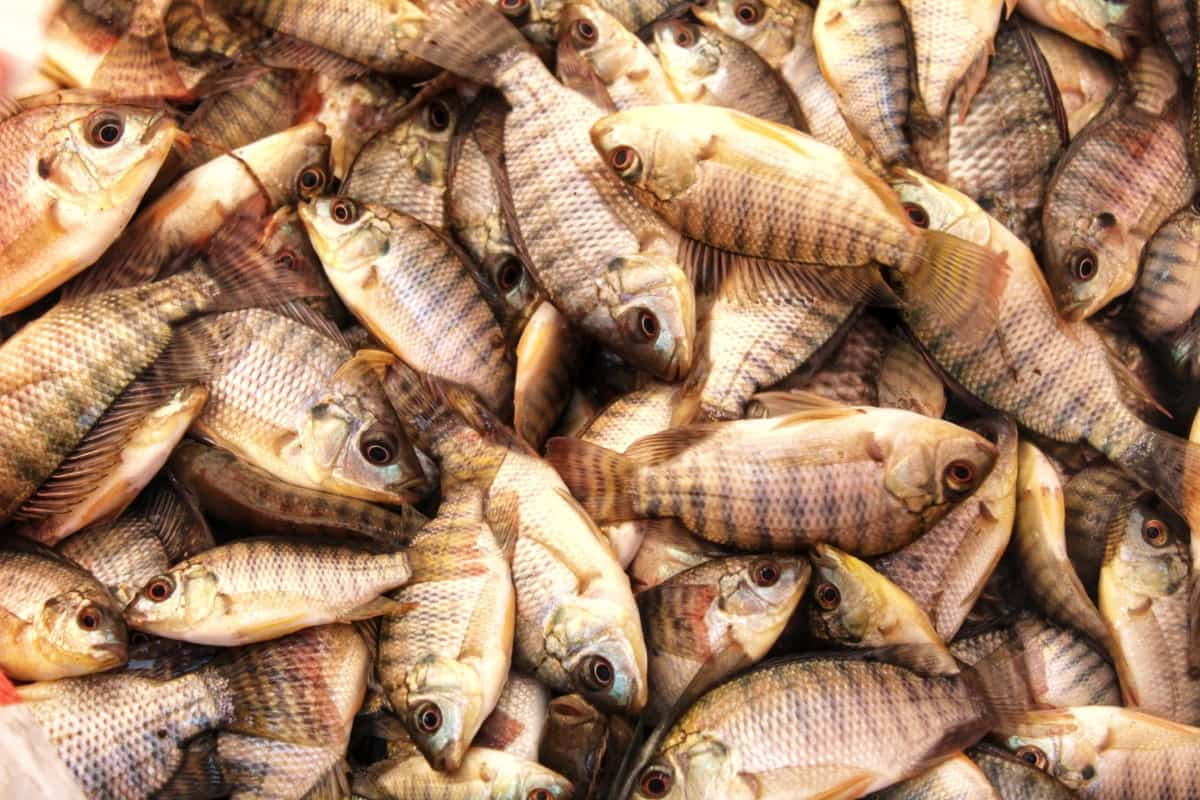
Conclusion
Tilapia fish farming in Saudi Arabia presents a promising avenue for sustainable aquaculture. This industry can thrive with a well-structured business plan, proper pond and tank setup, and strategic management. As Saudi Arabia seeks to meet the growing demand for high-quality fish integrated with innovative approaches, tilapia farming holds the key to a successful and environmentally conscious future in fish production.
- Types of Pesticides Used in Agriculture: A Beginner’s Guide
- Economical Aquaculture: A Guide to Low-Budget Fish Farming
- 15 Common Planting Errors That Can Doom Your Fruit Trees
- How to Make Houseplants Bushy: Effective Tips and Ideas
- Innovative Strategies for Boosting Coconut Pollination and Yield
- Pollination Strategies for Maximum Pumpkin Yield
- The Complete Guide to Chicken Fattening: Strategies for Maximum Growth
- Natural Solutions for Tulip Problems: 100% Effective Remedies for Leaf and Bulb-Related Issues
- Revolutionizing Citrus Preservation: Towards a Healthier, Greener Future
- Natural Solutions for Peony Leaf and Flower Problems: 100% Effective Remedies
- Maximizing Profits with Avocado Contract Farming in India: A Comprehensive Guide
- Natural Solutions for Hydrangea Problems: 100% Effective Remedies for Leaf and Flowers
- The Ultimate Guide to Choosing the Perfect Foliage Friend: Bringing Life Indoors
- From Sunlight to Sustainability: 15 Ways to Use Solar Technology in Agriculture
- The Ultimate Guide to Dong Tao Chicken: Exploring from History to Raising
- The Eco-Friendly Makeover: How to Convert Your Unused Swimming Pool into a Fish Pond
- Mastering the Art of Delaware Chicken Farming: Essentials for Healthy Backyard Flocks
- 20 Best Homemade Fertilizers for Money Plant: DIY Recipes and Application Methods
- How to Craft a Comprehensive Free-Range Chicken Farming Business Plan
- Brighten Your Flock: Raising Easter Egger Chickens for Beauty and Bounty
- How to Optimize Your Poultry Egg Farm Business Plan with These Strategies
- Subsidy for Spirulina Cultivation: How Indian Government Schemes Encouraging Spirulina Farmers
- Ultimate Guide to Raising Dominique Chickens: Breeding, Feeding, Egg-Production, and Care
- Mastering the Art of Raising Jersey Giant Chickens: Care, Feeding, and More
- Ultimate Guide to Raising Legbar Chickens: Breeding, Farming Practices, Diet, Egg-Production
- How to Raise Welsummer Chickens: A Comprehensive Guide for Beginners
- How to Protect Indoor Plants in Winter: A Comprehensive Guide
- Ultimate Guide to Grow Bag Gardening: Tips, Tricks, and Planting Ideas for Urban Gardeners
- Guide to Lotus Cultivation: How to Propagate, Plant, Grow, Care, Cost, and Profit
- Agriculture Drone Subsidy Scheme: Government Kisan Subsidy, License, and How to Apply Online
- Ultimate Guide to Raising Araucana Chickens: Breed Profile, Farming Economics, Diet, and Care
- Bringing Hydroponics to Classroom: Importance, Benefits of Learning for School Students
- Ultimate Guide to Raising Polish Chickens: Breed Profile, Farming Economics, Diet, and Care
- Ultimate Guide to Raising Australorp Chickens: Profile, Farming Economics, Egg Production, Diet, and Care
- Silkie Chicken Farming: Raising Practices, Varieties, Egg Production, Diet, and Care
- Sussex Chicken Farming: Raising Practices, Varieties, Egg Production, Diet and Care